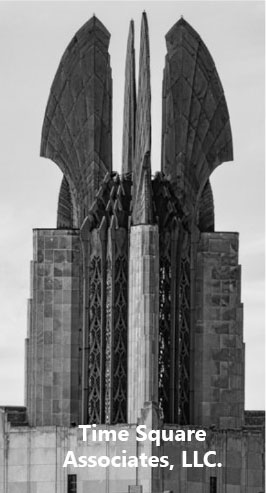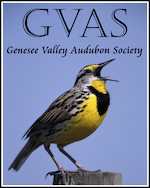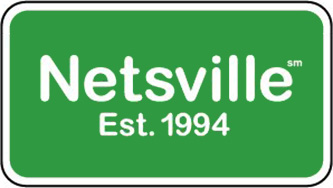Incubation – Turning Eggs into Eyases
Remember in a recent article I said to expect the unexpected when watching falcons? Well, here’s another example.
When we talked about egg laying, I noted that Mariah had never laid fewer than four eggs since she and Kaver became a pair in 2002. It seems that there’s a first time for everything, though. Mariah has begun brooding, or incubating the two eggs she has laid. A Peregrine usually begins brooding when the penultimate egg is laid, but remember that Mariah usually lays her eggs about 54 hours apart. This year, her two eggs were laid 50 hours apart– a bit shorter than normal for her. It’s been more than 80 hours since she laid the second egg. Scientists have seen examples of eggs being laid more than 72 hours apart, but it’s very rare. We never say never here at the Rochester Falconcam (it kind of goes along with expecting the unexpected), but at this point it looks like Mariah’s done laying eggs for this year.
You’re probably out there yelling at your computer screen right now, “How do you know Mariah’s incubating the eggs, Jess?!?”

Well, that’s a good question, so thanks for asking! We know she’s begun brooding by watching her behavior. During incubation, one of the falcons will stay on the eggs almost full time. They only take short breaks, leaving the eggs uncovered for a few minutes. In an eight hour period today, the eggs were only left uncovered three times, for no more than three minutes each time. That means for more than 98% of the time the eggs have been covered. Since it’s not very cold outside today, it’s pretty clear that they’re actually incubating, not just protecting the eggs from chilly air.
As we discussed before, Mariah and Kaver take turns brooding the eggs. Mariah incubates about 2/3 of the time, often for four or more hours before Kaver relieves her. Males brood for shorter periods– typically 2 to 3 hours, and they brood less frequently. While one adult is brooding, the other may be out hunting. Brooding falcons still need to eat, after all. If they’re not hunting, the other falcon usually stays close to the nest. Sometimes while Mariah is brooding the eggs Kaver will bring her food that he has hunted. She’ll eat the food outside the nest while he takes a turn incubating, but then she’ll come back and take over– provided she can get him to move off the eggs. If he doesn’t move right away, she may stand in the nest box and wail at him. Wailing has different meanings for falcons, but in general it indicates dissatisfaction with the current situation. So if Mariah wails at Kaver while he’s incubating, it’s her way of telling him she’s not happy that he’s still sitting on the eggs. As with most other interactions between male and female Peregrines, Mariah usually gets her way, though sometimes it takes a while for him to get the message.
So, just how does incubation work?
Heat makes the eggs start developing. When the eggs reach about 98.6°F, or 37°C the egg begins changing into an eyas. Conveniently enough, a Peregrine’s natural body temperature is about 103°F, or 39.5°C, so to heat up the eggs all they need to do is to get some of that body heat onto the eggs. Now, a Peregrine’s feathers make very good insulation. That’s how they can stand to stay out in cold temperatures without freezing to death. But while those feathers keep the cold air away from the falcon’s skin, they also keep their body heat from getting out. So to incubate the eggs, the Peregrine carefully settles down, shifting from side to side to get the eggs beneath their feathers. Falcons have brood patches, areas on their breasts with a lot of blood vessels close to the surface of their skin. The blood vessels concentrate their body heat, making it easier to transfer the heat to the eggs. Both Mariah and Kaver have brood patches, though his are smaller than hers, which makes sense since he’s a smaller bird (if you’ve been following along with Imprints you’ll know why. If not, go back and read about sexual dimorphism in Falcon Identification 101).
Peregrines incubate their eggs for 33 to 35 days. In the early days of brooding it’s important to keep the eggs as close to their ideal incubating temperature as possible. Too hot or too cool and the eggs won’t develop properly. Later in the incubation process, proper temperature isn’t quite as important. In fact, after a couple of weeks the falcons will be able to leave the eggs uncovered for longer periods of time. Sometimes leaving the eggs uncovered frequently, or for long periods can mean that the eggs hatch a few days later than normal. That usually doesn’t happen with Mariah and Kaver, though. Their nest box is in a place where it’s not likely to be disturbed, so they most often incubate steadily until the eggs hatch.
If you watch closely, you might see Mariah or Kaver get up, move around, then settle back down on the eggs. Sometimes they do this just to get into a different position, and maybe to give their legs a bit of a stretch, but often what they’re doing is turning the eggs. They turn the eggs to ensure that they get evenly heated. If the eggs aren’t heated evenly they may not develop, or they may develop abnormally. It’s also possible for the developing egg to stick to the inside of the eggshell. Turning the eggs keeps the egg membrane from sticking to the sides of the shell. Falcons turn the eggs using their bills and their feet. As you can imagine, they turn their eggs very carefully! If you’re watchful and lucky, you may get to see a picture of them turning the eggs. It may look like they’re stepping on the eggs or pecking at them, but now you know what’s really going on.
-Jess





April 1st, 2007 at 6:55 PM
Jess, you’re the best! I’ve been dying to hear if you think she’s finished laying eggs. I got my answer and so much more. You’re a fabulous teacher. Thank you.
April 1st, 2007 at 10:34 PM
Do you think Marah’s age has anything to do with her laying only two eggs this year?
April 1st, 2007 at 11:07 PM
Thanks for the great explanation Jess. What wonderful parents Mariah and Kaver are already!
April 2nd, 2007 at 12:04 AM
Thank you Jess. Wonderful information and you make it fun to read.
I have concerns with Mariah”s age. If this brood stresses her too much, or she doesn’t survive until they fledge, what happens? Could Kaver take over by himself, or will Mother Nature have to intervene? I hate the thought of losing her.
April 2nd, 2007 at 9:32 AM
Thanks to everyone for following the lives of these wonderful creatures. We appreciate all of your interesting comments and questions, so keep them coming!
@Donna and Tammy- Older falcons do sometimes lay fewer eggs, but it’s impossible to say whether this is the case for Mariah. Time will tell if we’re in for fewer eggs, but the only way we’ll know for sure is to see what she does in the coming years. A big change in a single year doesn’t necessarily signal a trend.
As for the survival of the eyases if Mariah should perish, Kaver’s proven that he can feed five hungry eyases plus himself and Mariah (he did it for three years running, in 2003-2005), so I have no doubt that he could provide for them on his own. If she died prior to hatching, I think it would be very difficult for the eyases to survive to fledging. I’ll talk about some of the reasons why in a future Imprints article.
April 2nd, 2007 at 2:41 PM
Thank you, Thank you, for the News Flash! I was beginning to wonder if Mariah was going to have more than 2 eggs since I left the site early this morning. What a nice surprise to log on later and see your announcement of the third egg. I guess we were all hoping for more from her, but I’ll be happy watching for the 3, and hoping each will be a successful hatch. Eve in Rochester.
April 9th, 2007 at 3:24 PM
hello my name is yasmin i am happy that mariha has 5 eggs and i hope that they come out soon from the egg
April 14th, 2007 at 6:33 PM
hello today i thinck mariya is ganna have an egg and i am from school #28 i am a studdent and my teacher is mrs.andino
April 18th, 2007 at 12:12 PM
It seems like the Rochester falcons sit very quiet and hardly move while brooding compared to the Falcons in Syracuse – even allowing for the delay between photo shots in Roc. Are the Syr falcons more active? http://www.usadatanet.com/falconCamJava.html